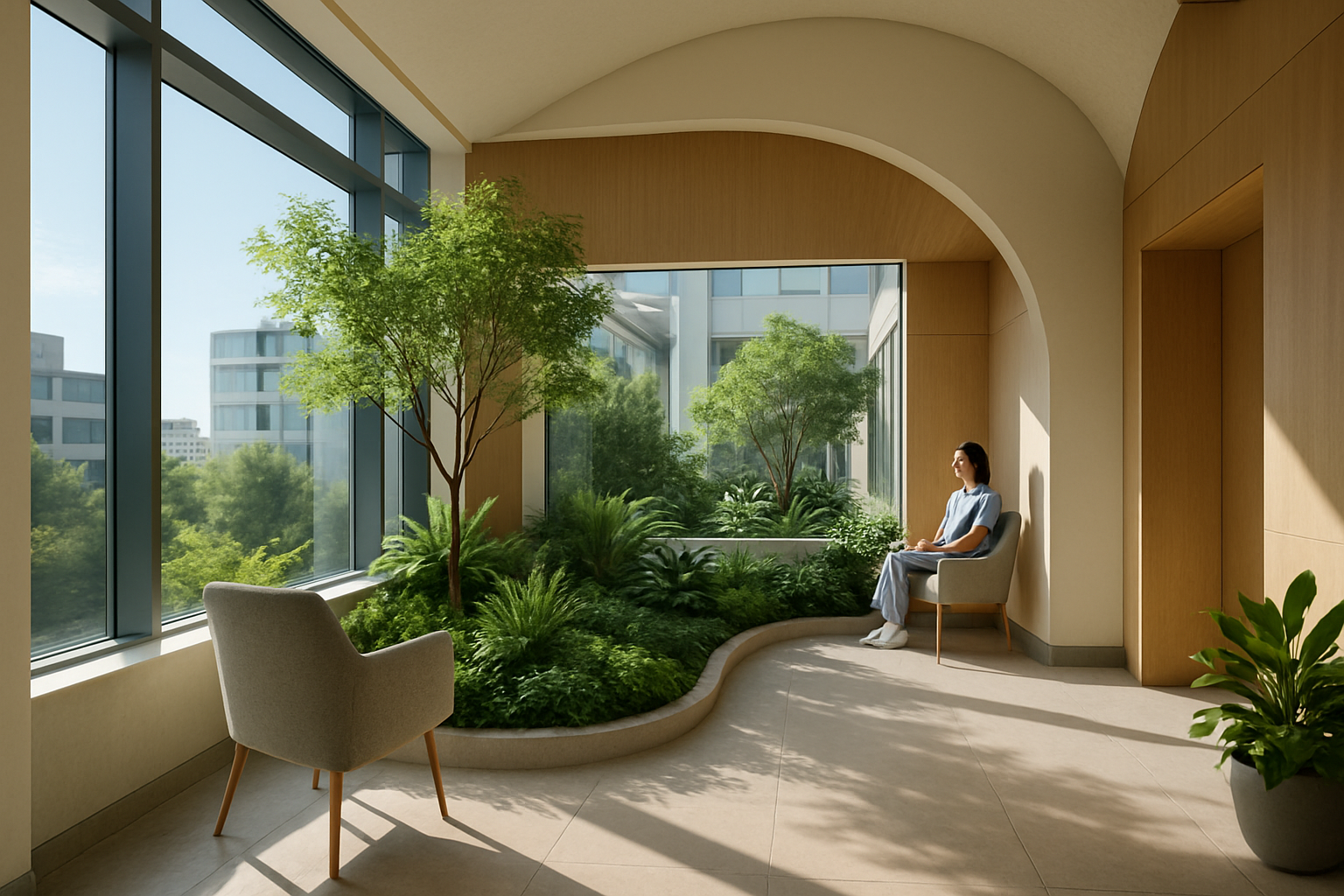Biophilic Design: Nature-Inspired Spaces for Enhanced Well-being
How can our living and working environments impact our health? Imagine walking into a room filled with natural light, lush greenery, and organic textures. This isn't just about aesthetics; it's a revolutionary approach to design that's transforming how we think about wellness. Welcome to the world of biophilic design, where nature meets architecture to create spaces that nurture our physical and mental health.

The Origins and Evolution of Biophilic Design
The term “biophilia” was coined by psychoanalyst Erich Fromm in 1973, describing humans’ innate attraction to nature and living systems. Biologist Edward O. Wilson later expanded on this concept in his 1984 book “Biophilia,” proposing that our connection to nature is deeply rooted in our evolutionary history. This laid the foundation for biophilic design, which emerged as a formal concept in the 1990s.
As urbanization accelerated and people spent more time indoors, researchers began to explore the potential health benefits of incorporating nature into built environments. Studies showed that exposure to natural elements could reduce stress, improve cognitive function, and enhance overall well-being. This led to a growing interest in biophilic design principles among architects, designers, and health professionals.
The Science Behind Biophilic Design
Research has consistently demonstrated the positive impact of biophilic design on human health and performance. A landmark study by Roger Ulrich in 1984 found that hospital patients with views of nature recovered faster and required less pain medication than those facing brick walls. Subsequent studies have reinforced these findings, showing that biophilic elements can:
-
Reduce stress and anxiety levels
-
Improve cognitive function and creativity
-
Enhance mood and emotional well-being
-
Boost productivity and job satisfaction
-
Accelerate healing and recovery processes
These benefits are attributed to various physiological and psychological mechanisms. Exposure to natural light, for instance, helps regulate our circadian rhythms, improving sleep quality and overall health. The presence of plants can improve air quality by filtering pollutants and increasing oxygen levels. Natural materials and textures provide sensory stimulation that can reduce mental fatigue and improve focus.
Key Elements of Biophilic Design
Biophilic design incorporates a wide range of elements to create nature-inspired spaces. Some key components include:
-
Natural light: Maximizing daylight exposure through large windows, skylights, and strategic lighting design.
-
Green spaces: Incorporating indoor plants, living walls, and outdoor gardens to bring nature indoors.
-
Natural materials: Using wood, stone, and other organic materials in construction and furnishings.
-
Water features: Integrating fountains, ponds, or other water elements to create a calming ambiance.
-
Organic shapes and patterns: Incorporating curves, fractals, and other naturally occurring forms in architectural and interior design.
-
Views of nature: Designing spaces with visual connections to outdoor landscapes or natural scenery.
-
Natural ventilation: Creating airflow patterns that mimic outdoor environments.
Implementing Biophilic Design in Various Settings
Biophilic design principles can be applied across a wide range of environments, each with unique considerations and benefits:
Workplaces: Companies like Amazon and Google have embraced biophilic design in their offices, creating green spaces, natural light-filled areas, and even indoor forests. These environments have been shown to increase employee productivity, creativity, and job satisfaction while reducing absenteeism.
Healthcare facilities: Hospitals and clinics are incorporating biophilic elements to create more healing environments. Studies have shown that patients in rooms with natural views and elements experience faster recovery times, reduced pain perception, and improved overall outcomes.
Educational institutions: Schools and universities are using biophilic design to enhance learning environments. Natural light, indoor plants, and outdoor learning spaces have been linked to improved cognitive function, attention span, and academic performance among students.
Residential spaces: Home design is increasingly incorporating biophilic elements to create more restorative and stress-reducing living environments. This can include features like indoor gardens, natural material finishes, and strategically placed windows to maximize natural light and views.
Challenges and Future Directions
While the benefits of biophilic design are clear, implementation can present challenges. Initial costs, maintenance requirements, and the need for interdisciplinary collaboration between architects, designers, and health professionals can be barriers to widespread adoption. However, as awareness grows and technology advances, these challenges are becoming more manageable.
Looking ahead, the future of biophilic design is promising. Emerging technologies like smart lighting systems that mimic natural light patterns and advanced air purification systems integrated with living walls are pushing the boundaries of what’s possible. Additionally, the growing focus on sustainability and eco-friendly design aligns perfectly with biophilic principles, creating opportunities for innovative, nature-inspired solutions in urban planning and architecture.
Biophilic Design: Practical Tips for Healthier Spaces
-
Maximize natural light in your home or office by keeping windows unobstructed and using light-colored, reflective surfaces
-
Incorporate indoor plants, choosing varieties known for their air-purifying qualities
-
Use natural materials like wood and stone in your interior design
-
Create a small water feature, such as a desktop fountain, to introduce the calming sound of flowing water
-
Display nature-inspired art or photographs to create visual connections with the natural world
-
Opt for furniture with organic shapes and natural textures
-
Use essential oils or natural fragrances to introduce nature-inspired scents into your space
In conclusion, biophilic design represents a powerful intersection of architecture, nature, and human health. By intentionally incorporating natural elements into our built environments, we can create spaces that not only look beautiful but actively contribute to our physical and mental well-being. As research continues to unveil the profound impact of our surroundings on our health, biophilic design stands poised to revolutionize how we approach wellness in the spaces where we live, work, and heal.





